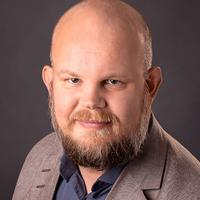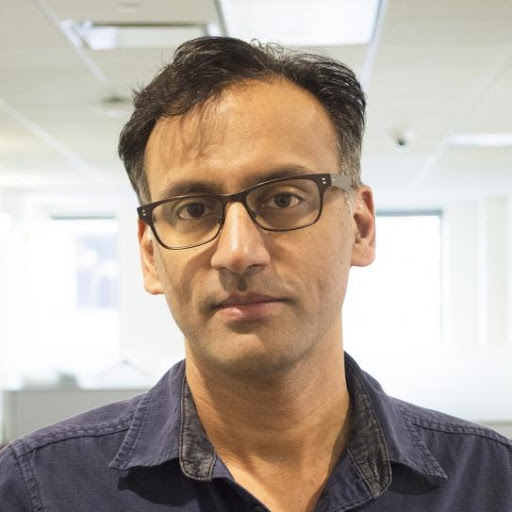IEEE 10th Spanish Workshop on Signal Processing, Communication and Information Theory
Granada, Spain, November 21-22, 2022.
Photo credit: Gonzalo G.S.
Plenary Talks
 |
Plenary Talk 1: Augmented Intelligence for Architectural Design with Conditional Autoencoders: a Vertical Garden
Speaker: Fernando Pérez-Cruz, Swiss Data Center and ETH Zurich.
Date: 22th November, 09:30-10:30.
Abstract: We propose an augmented intelligence design pipeline to improve architects design experience. Nowadays, architects and engineers use software for parametric design (e.g. Grasshopper) for drafting models that enable them to generate, simulate, and evaluate multiple design instances. In this paper, we propose a conditional autoencoder that reverses the process and allows architects to define the desired properties in their designs, which are mapped to input parameters. Our tool also allows the architect to under-define the desired properties and give additional flexibility to finding optimal designs. The proposed autoencoder explores the set of potential solutions providing surprising designs that still fulfil the prescribed properties, augmenting human's understanding of the task. We specifically illustrate this tool for architectural design of a multi-story structure that will be built in 2022 in Zug, Switzerland.
Bio: Fernando Pérez-Cruz received a PhD. in Electrical Engineering in 2000 from the Technical University of Madrid and an MSc/BSc in Electrical Engineering from the University of Sevilla in 1996. He is the Chief Data Scientist at the Swiss Data Science Center (ETH Zurich and EPFL) and a Professor at the Computer Science department at ETH Zurich. He has been a member of the technical staff at Bell Labs and an Associate Professor with the Department of Signal Theory and Communication at University Carlos III in Madrid and Computer Science at Stevens Institute of Technology. He has been a visiting professor at Princeton University under a Marie Curie Fellowship and a Research Scientist at Amazon. He has also held positions at the Gatsby Unit (London), Max Planck Institute for Biological Cybernetics (Tuebingen), BioWulf Technologies (New York) and the Technical University of Madrid and Alcala University (Madrid). His current research interest lies in machine learning and its wide application to sciences and engineering. His has coauthor over 100 publications in scientific journals and conferences and has an h-index of 36.
|
 |
Plenary Talk 2: Cell Detection by Functional Inverse Diffusion and Nonnegative Group Sparsity
Speaker: Joakim Jaldén, KTH Royal Institute of Technology.
Date: 22th November, 11:00-12:00.
Abstract: On August 28, 2018, a Stockholm-based biotech company launched a new product: The Mabtech IRISTM: a next-generation FluoroSpot and ELISpot reader. The reader is a machine designed to analyze biomedical image-based assays that are commonly used in immunology to study cell responses. A contemporary use case involves the development of vaccines for SARS-CoV-2 or the study of the T-cells in the immune system. A core technology of the overall solution is a positivity constrained groups sparsity regularized least squares optimization problem, solved with large-scale convex optimization methods.
The presentation will outline the problem of analyzing FluoroSpot assays from a signal processing and optimization perspective and explain the methods we designed to solve it. The problem essentially amounts to counting, localizing, and quantifying heterogeneous diffuse spots in an image. The solution involves the development of a tractable linear model of the physical properties that govern the reaction-diffusion-adsorption-desorption process in the assay; the formulation of an inverse problem in function spaces and its discretized approximation; the role of group sparsity in finding a plausible solution to an otherwise ill-posed problem; and how to efficiently solve the resulting 40 million variable optimization problem on a GPU.
Bio: Joakim Jaldén received the M.Sc. and Ph.D. in electrical engineering from the KTH Royal Institute of Technology, Stockholm, Sweden in 2002 and 2007 respectively. From July 2007 to June 2009, he held a post-doctoral research position at the Vienna University of Technology, Vienna, Austria. He also studied at Stanford University, CA, USA, from September 2000 to May 2002, and worked at ETH, Zürich, Switzerland, as a visiting researcher, from August to September 2008. In July 2009, he returned to KTH, where he is now a Professor of Signal Processing. He was an associate editor for the IEEE Communications Letters between 2009 and 2011, and an associate editor for the IEEE Transactions in Signal Processing between 2012 and 2016. He has been a member of the IEEE Signal Processing for Communications and Networking Technical Committee (SPCOM-TC) since 2013 and ended his term as TC-chair in 2020. Since 2016 he has also been academically responsible for the five-year Degree Program in Electrical Engineering (CELTE) at KTH.
For his work on MIMO communications, Joakim has been awarded the IEEE Signal Processing Society’s 2006 Young Author Best Paper Award, the Distinguished Achievement Award of NEWCOM++ Network of Excellence in Telecommunications 2007–2011, and the best student conference paper award at IEEE ICASSP 2007, and at IEEE ICASSP 2021 as a co-author. He is also a recipient of the Ingvar Carlsson Career Award issued in 2009 by the Swedish Foundation for Strategic Research. His current research interest includes signal processing for biomedical data analysis. Earlier work in this field was awarded a conference best paper award at IEEE ISBI 2012, and subsequent work by the group has been awarded several Bitplane Awards in connection to the ISBI cell tracking challenges between 2013 and 2015. Later work on the analysis of FluoroSpot and ELISpot assays saw its first commercial applications in 2018.
|
 |
Plenary Talk 3: Channel Modeling and Circuits for Communications and Sensing Above 100 GHz
Speaker: Sundeep Rangan, NYU Wireless.
Date: 22th November, 12:00-13:00.
Abstract: The frequencies above 100 GHz have attracted considerable interest for both massive bandwidth communication links and very high resolution RADAR and sensing. Systems in these frequencies have unique characteristics in terms of device nonlinearities, MIMO architectures and radio propagation that in turn present significant design challenges. This talk will discuss recent results in channel modeling and circuit design above 100 GHz. For channel modeling, we will discuss new machine learning models built from ray tracing data that can help describe the complexities of channels at these frequencies. We will then discuss novel models for device nonlinearities and their impact on channel capacity and signal processing. In particular, we will describe a new power optimization methodology that enables significant power savings with minimal performance loss.
Bio: Dr. Rangan received the B.A.Sc. at the University of Waterloo, Canada and the M.Sc. and Ph.D. at the University of California, Berkeley, all in Electrical Engineering. He has held postdoctoral appointments at the University of Michigan, Ann Arbor and Bell Labs. In 2000, he co-founded (with four others) Flarion Technologies, a spin-off of Bell Labs, that developed Flash OFDM, the first cellular OFDM data system and pre-cursor to 4G cellular systems including LTE and WiMAX. In 2006, Flarion was acquired by Qualcomm Technologies. Dr. Rangan was a Director of Engineering at Qualcomm involved in OFDM infrastructure products. He joined the ECE department at NYU Tandon (formerly NYU Polytechnic) in 2010. He is a Fellow of the IEEE and the Associate Director of NYU WIRELESS, an industry-academic research center on next-generation wireless systems.
|
Back to Top
|



